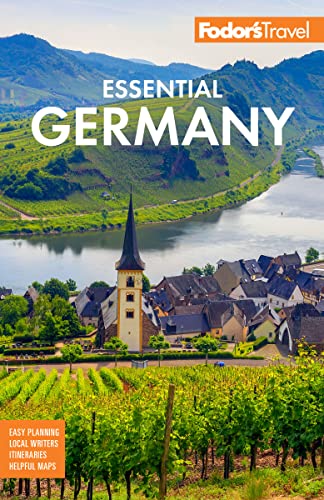Following Martin Luther
Saxony-Anhalt and Thuringia are currently celebrating the "Luther decade," preparing to mark the Protestant Reformation’s 500th anniversary in 2017. A drive between the Lutherstädte (Luther Cities) allows for a deeper understanding of Martin Luther and the Reformation.
Dissatisfaction was already brewing, but Martin Luther (1483–1546) was the first German to speak out against the Catholic Church. His 95 Theses, which he brashly nailed to a church door, called for a return to faith in the Bible’s teachings over papal decrees, and an end to the sale of indulgences (letters from the pope purchased by wealthy Christians to absolve them of sins). Luther's greatest feat was translating the Bible into German, making it accessible to everyone who could read. His translation united the German dialects into the High German that almost everyone speaks today. Despite such so-called heretical beginnings, Luther overcame condemnation by the pope and other authorities. He continued to preach, building a family with Katharina von Bora, a former nun he married after "rescuing" her from a convent. After his death, Lutheranism spread across Europe as an accepted branch of Christianity.
Luther Quotes
"I am more afraid of my own heart than of the pope and all his cardinals. I have within me the great pope, Self."
"When the Devil . . . sees men use violence to propagate the gospel, he . . . says with malignant looks and frightful grin: ‘Ah, how wise these madmen are to play my game! Let them go on; I shall reap the benefit . . . ’"
On the Trail of Martin Luther
Start in the town of Wittenberg, the unofficial capital of the Reformation. The comprehensive Lutherhaus museum is in the Augustinian monastery where Luther lived twice, first as a monk and later with his family. This multilevel, bilingual museum will convince the skeptics that Luther is worth remembering. From the museum, it’s a short walk down the main thoroughfare Collegienstrasse to two churches that felt the influence of his teachings. The first is Stadtkirche St. Marien (Parish Church of St. Mary), where Luther often preached. The second, Schlosskirche (Castle Church), is where Luther changed history by posting his 95 Theses. The original wooden doors were destroyed in a 1760 fire, now replaced by bronze doors with the Latin text of the 95 Theses. On the way from one church to the other, stop to admire the statues of Luther and his friend and collaborator Philipp Melanchthon—they are buried next to each other in Schlosskirche.
In the nearby town of Eisleben, the houses where Luther was born, the Luthers Geburtshaus, and died, Luthers Sterbehaus, lie 10 minutes from each other. From there, it’s easy to spot the steeples of two churches: St. Petri-Pauli-Kirche (Church of Sts. Peter and Paul ) and St. Andreaskirche (St. Andrew’s Church ). The first was Luther’s place of baptism, while the second houses the pulpit where Luther gave his last four sermons. His funeral was also held here before his body was taken back to Wittenberg.
Continuing southwest the stunning medieval castle Wartburg is in the hills high above the town of Eisenach. Luther took refuge here after he was excommunicated by the pope and outlawed by a general assembly called the Diet of Worms, famously translating the New Testament from the original Greek into German.
Reformation Timeline
1517: Luther nails his 95 Theses to Wittenberg’s Schlosskirche.
1521: Refusing to recant, Luther is excommunicated.
1537: Denmark’s Christian III declares Lutheranism the state religion, leading to its spread in Scandinavia.
1555: Charles V signs Peace of Augsburg, ending open hostilities between Catholicism and Lutheranism and granting the latter official status. Due to the rise of Calvinism, conflict bubbles under the surface.
1558: Queen Elizabeth I of England supports the establishment of the English Protestant Church.
1577: The Formula of Concord ends disputes between sects, strengthening and preserving Lutheranism.
1618: Religious tensions explode in Bohemia, thrusting Europe into the Thirty Years’ War. At war’s end, much of Central Europe is in ruins, with 40%–70% of people dead.
1650s and beyond: Lutheran explorers and settlers bring their beliefs to the New World.




